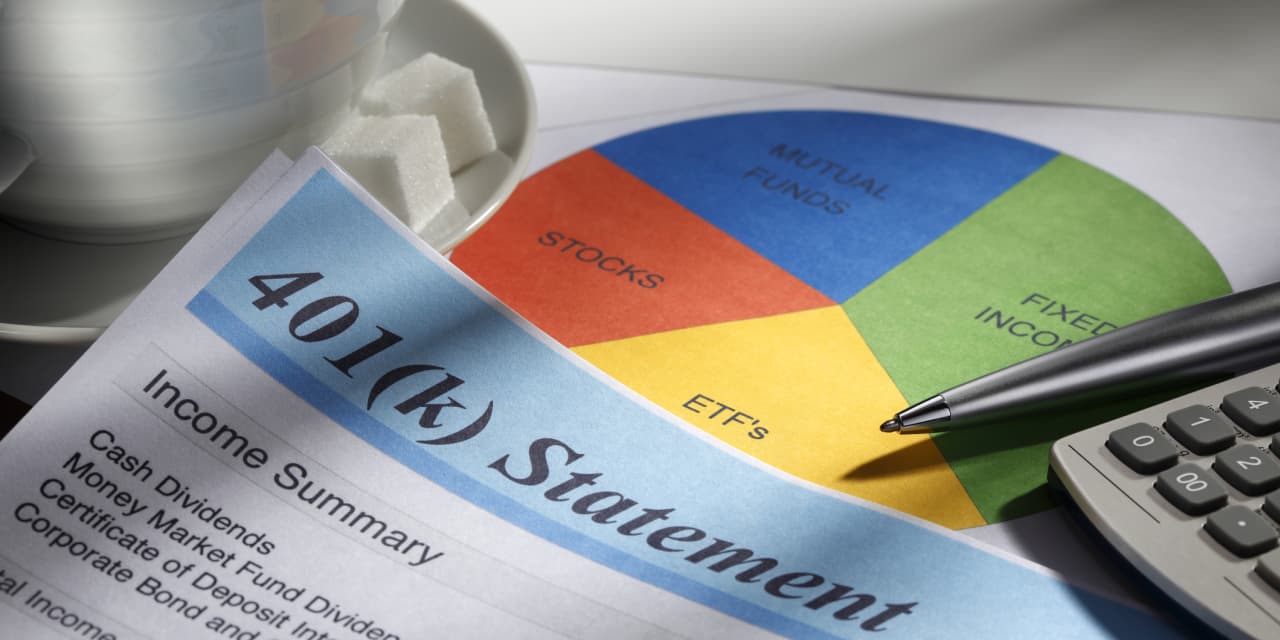Bonds have been quite volatile this year, and conservative investors saving for their children’s education and their own retirement are questioning conventional advice to hedge market risks by placing 60% of their portfolio in equities and 40% in bonds.
Stocks will have good times and bad times and prices can head south for a few months, even during a long bull market. When stocks are down, selling is painful if you need cash to pay tuition and other school fees, meet monthly retirement expenses or satisfy the IRS’s Required Minimum Distributions on tax sheltered accounts.
When the economy cycles down, stocks often follow. The U.S. Federal Reserve usually cuts the federal funds rate and that should pull down auction rates on new Treasury securities with longer maturities — most importantly 10-year U.S. Treasurys
BX:TMUBMUSD10Y,
which are a benchmark for mortgages, car loans, corporate bonds and other long-term securities.
Bonds are supposed to provide some stability. When the Fed cuts rates, the values of previously purchased bonds in portfolios should rise, mitigating some stock losses in a balanced portfolio. But bond prices don’t always go up or even stay constant when stocks are falling.
As stocks took a dive from the end of July to late October, for example, the yield on 10-year Treasurys increased to almost 5% from 3% percent, and bond prices took a shellacking. Conservative investors often rely on bond funds to manage risks. The Vanguard Long-Term Treasury Fund VUSTX, for example, lost 8.5% over that period.
“With stocks and bonds declining together, parents facing college expenses and retirees selling securities have been hurt.”
In 2022, the 60/40 strategy had its worst year since 1937 by falling 17%—and the strategy’s 2023 performance will hardly reverse those losses.
With stocks and bonds declining together, parents facing college expenses and retirees selling securities have been hurt. Parents whose children were freshmen or sophomores this year are at serious risk of asking their offspring to go deeper into debt than anticipated during their senior year. Folks who retired earlier than anticipated in the wake of the pandemic, calculating they just had enough saved, are at risk if they had significant bond holdings.
Worse, the history of bond and stock prices hardly indicates they move in opposition directions in any predictable manner over the long haul.
Generally, stock and bond returns were only mildly negative correlated from 2001 to 2020, but since then have moved together more tightly —meaning bonds exacerbated losses on stocks when equities were down in a balanced portfolio.
But that doesn’t mean bonds can’t be useful to cushion the ups and downs of equity prices. U.S. investors have just gone through a dramatic period for Treasurys that likely signals a permanent upward adjustment in longer-term interest rates relative to the expected returns on stocks.
The U.S. government is borrowing significantly more, and politicians aren’t inclined to spend less or raise taxes. Bigger deficits increase the annual additions to the supply of Treasurys.
Housing prices continue to rise — indicating families will have to borrow more to own homes or real estate developers will borrow more to supply additional units. These will increase the supply of bonds through government-agency mortgage-backed securities.
Meanwhile, foreign central banks and other investors are diversifying from the U.S. dollar
DX00,
That reduces the demand for Treasurys.
As the share of retirees in the population increases, they sell bonds and stocks to finance spending. Wealthier retirees with more savings than they need can sell mostly bonds and leave their legacy in stocks — recent data indicate they are doing just that. This too reduces demand for bonds.
More supply and less demand mean higher interest rates on Treasurys, and bigger returns for investors if they hold bonds to maturity.
Higher interest rates also pressure the valuations of technology companies, which have driven market returns in recent years. Simply, higher interest rates lower the expected present value of future profits for startups and established companies investing in innovations like artificial intelligence.
Read: ‘Unicorn’ startups are going under fast and VCs aren’t riding to their rescue
The S&P 500
SPX
outperformed 10-year Treasury securities by 5-to-1 from 1998 to 2022. Going forward, that ratio may be lower — perhaps 4 to1 — but stocks will still offer superior long-term returns over Treasurys.
“Given the volatility of stocks, it’s better to hedge your bets with bonds. ”
Yet given the volatility of stocks, it’s better to hedge your bets with bonds if you can mitigate their price fluctuations. This will create a stable path of redemptions at full value and you can avoid selling when prices are down.
Put 60% of your holdings in stocks. For emergencies, put 10% in a conventional money market fund — or a muni-bond money-market if you are in a high tax bracket. Invest the remaining 30% in a ladder of Treasurys that will mature as you need college funds or retirement income.
If you buy bonds that mature as you need cash, you receive their full-face value at redemption. In this way, you can neutralize interest rate risk and have your money when you need it.
Peter Morici is an economist and emeritus business professor at the University of Maryland, and a national columnist.
More: Don’t give up on the 60/40 portfolio now — it has been a good insurance policy in an unpredictable stock market
Also read: The 60/40 stock-bond portfolio appears to be broken. Here’s how it could change.
Read the full article here


